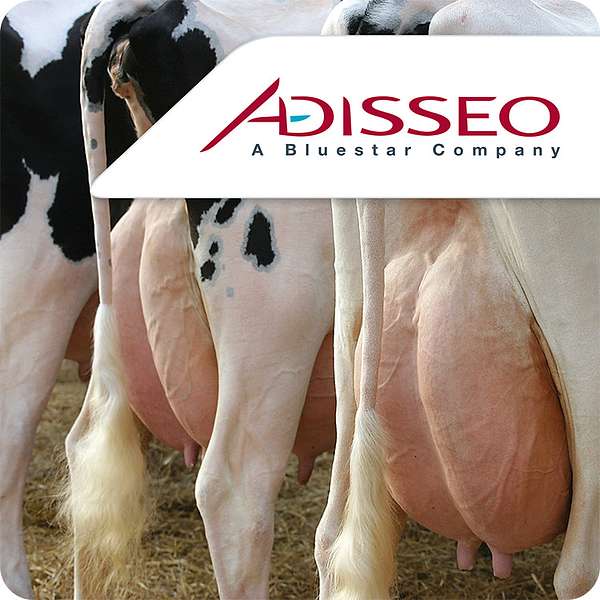
Smart Science Series™ Ruminant Podcasts
Each podcast contains timely nutritional information from Adisseo and industry experts.
The conversational Transition Health series focuses on solutions to transition health concerns.
The previous two series present research highlights from the 2021 and 2022 American Dairy Science Association (ADSA) Annual Meetings.
The latest serie focuses on Amino Acid balancing for Lifetime Performance as we are celebrating the 30th anniversary of AA balancing in 2023.
Smart Science Series™ Ruminant Podcasts
How balanced amino acid supplementation stimulates milk and component production independently of energy sources
Researchers from the University of Wisconsin – Madison hypothesized that glucogenic energy, by stimulating insulin secretion, may increase the effect of amino acids on the production of milk components. Using a Latin square design with four 28-d periods, they fed two energy sources — glucogenic (27.5% starch, 3.2% fatty acids) or ketogenic (20.0% starch, 5.8% fatty acids) — and two amino acid levels — 10% metabolizable amino acid deficient or amino acid sufficient, balanced for leucine, lysine and methionine.
Overall, balanced amino acid supplementation stimulated production of milk and components independently of energy source, but milk urea nitrogen and urinary nitrogen excretion results suggest cows used nitrogen more efficiently under glucogenic diets.
Based on 2022 American Dairy Science Association (ADSA) abstract:
1243 Energy source and amino acids additively stimulate milk fat production but interact on the regulation of milk protein synthesis
Features Dr. Sebastian Arriola Apelo, Assistant Professor at the University of Wisconsin. Kathryn Ruh, MSc student at the University of Wisconsin. Dr. Brian Sloan, Global Director of Ruminant Amino Acids and Protected Nutrient Business, Adisseo. Dr. Daniel Luchini, Head of Ruminant R&I, Adisseo. Dr. Danielle Coleman, Ruminant R&I Science Manager, Adisseo.
To view abstracts, go to: https://www.adisseo.com/en/products/smartline/smart-science-series-ruminant-videos-and-podcasts/